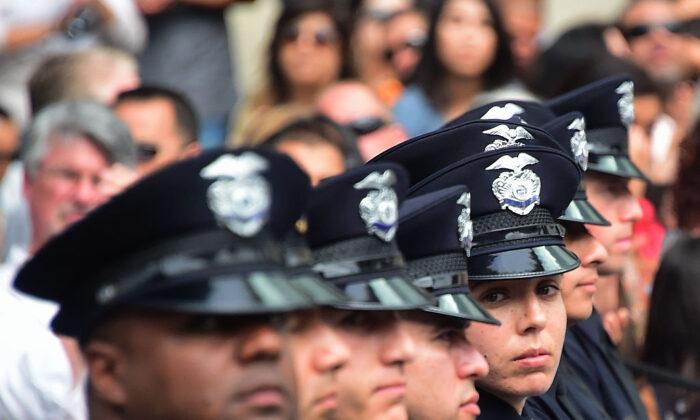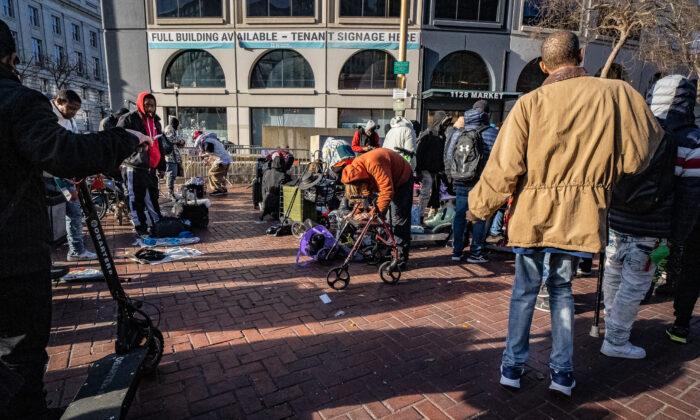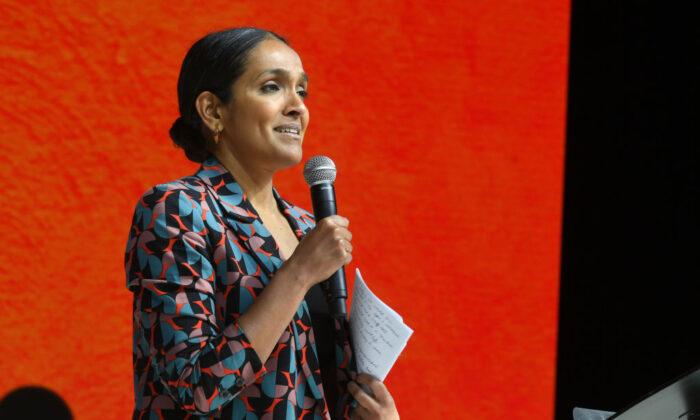LOS ANGELES—The city and county of Los Angeles have been ordered by a federal judge to come up with a feasible strategy to address the homeless crisis that has been decried by local residents, activists, and business owners alike.
The LA Alliance for Human Rights, a diverse group of community representatives, sued the county and city in March 2020 over the lack of adequate shelters and services available to the homeless. U.S. District Judge David Carter then issued a 110-page injunction in April 2021 ordering the city and county to place $1 billion into escrow to move Skid Row’s thousands of homeless individuals into housing.
After the Ninth Circuit Court of Appeals overturned that injunction in September, the alliance filed an amended lawsuit, and Los Angeles County then filed a motion for the judge to dismiss the case.
On Jan. 24, Carter ordered a mandatory settlement conference for Feb. 15 for city and county officials to come up with a solution to house the homeless. If an agreement is not reached at the conference, the case is expected to go to trial.
Carter has repeatedly expressed frustration with how officials have dealt with the squalor on the streets.
“There has to be some kind of settlement eventually,” Carter said during the 90-minute court hearing on Zoom.
According to the most recent homeless count from 2020, there are approximately 66,000 homeless people living in the county and 41,000 in the city of Los Angeles. The next homeless count is slated to begin in February.

Outside counsel for Los Angeles County, Skip Miller, told the court the county shouldn’t be cited in the lawsuit since no laws were broken by county officials.
“They [the plaintiffs] say the county has not done enough,'' Miller said. “That’s not a constitutional violation. We don’t belong in this lawsuit as a defendant. We didn’t do anything wrong. We’re trying to fix the problem. ... We think the lawsuit should be dismissed.”
LA Alliance attorney Elizabeth Mitchell said the gridlock between city and county officials reflects “continued systemic failure” in which local government is “failing in statutory and constitutional obligations” to protect citizens.
“This ever-worsening public health and safety emergency demands immediate, life-saving action,” Carter said last year. “The city and county of Los Angeles have shown themselves to be unable or unwilling to devise effective solutions to L.A.’s homelessness crisis.”
Much of the crisis has been blamed on the failures of Prop. HHH—a $1.2 billion bond passed in 2016—which was supposed to build 10,000 permanent supportive housing units. A 2021 audit by Los Angeles City Controller Ron Galperin found only 489 of those units had been built since the measure passed six years ago. He suggested the focus should shift to temporary solutions while the housing projects remain stuck in development pipelines.
Daniel Conway of the LA Alliance told The Epoch Times in a previous interview that Los Angeles County is “not good at producing housing” because it’s done “very slowly and very expensively.”
“So, for a decade plus now, we’ve had this commitment to permanent supportive housing as kind of the answer to homelessness. But we’ve never actually been able to figure out how to turn that into like an actual operational scalable model,” he said.

To quell sprawling encampments near neighborhoods and schools, the city council voted to restrict camping, lying, or sleeping in 54 specified areas across three districts last October. The vote was a result of fed-up community members who feared their neighborhoods were becoming hot spots for crime, drug dealing, and litter.
Many residents have told The Epoch Times the problem has worsened in recent years, but the pandemic exacerbated the issue even further as the city rolled back restrictions that prohibited camping between certain hours. The famed Venice Beach Boardwalk became a hub for crime, encampments, and fires last summer as Councilmember Mike Bonin said the beach would become a sanctuary zone for those seeking shelter during the pandemic.
Months after the boardwalk was cleaned up by outreach workers and the Los Angeles Sheriff’s Department Homeless Outreach Team, residents report that tents have begun popping back up on the beach. Bonin has opted out of enforcing the ban on encampments in his district.

The state adopted a “Housing First” model in 2016 through SB 1380, which required all housing programs to adopt the approach to solve the homelessness crisis. Prop. HHH, also passed in 2016, was the state’s first effort to embrace this new strategy.
Critics of the Housing First model argue it takes too long and costs too much to build permanent supportive housing units while homeless people remain suffering on the streets. Additionally, they argue the best way to treat the homeless is through drug rehabilitation, mental health programs, and an emphasis on emergency shelters over expensive housing.
In a pivot to address the urgent needs affecting the homeless, Los Angeles has begun utilizing Prop. HHH funds toward interim shelters and tiny home villages. One of the city’s most recent pilot programs, called the Safe Sleep Village, ran from April 2021 to December 2021. The program in Councilmember Mitch O’Farrell’s district used an empty parking lot to pitch tents in 72 empty spots, with a cost of $2,600 per spot. Residents of the lot had 24/7 management, outreach services, and security through the San Francisco-based nonprofit Urban Alchemy. The total price tag of the pilot was $1.5 million.
According to Kirkpatrick Tyler, deputy chief of governmental and community affairs for Urban Alchemy, the program was a success because it provided services to help 35 people transition into one of the tiny home villages within O’Farrell’s district when the program ended.

Even though the program used over a million dollars, Tyler said the cost of construction and level of care are not always factored into the conversation.
“There’s a whole bunch of things that we’re not counting into the numbers,” Tyler told The Epoch Times. “When we say this cost a million dollars ... we are not taking into account what’s necessary to that person to maintain their housing, to continue to work on the places where they still need help and to help to guide them to sustainability.”
Tyler said the homelessness crisis has grown out of control in part because of the “dismantling of the mental health system in California” in the 1980s.
“Some of that was exacerbated by the depopulation of our jails and prisons without the proper support to support those folks who were being released,” he said.
Now, the parking lot used for the Safe Sleep program will break ground this year to become a 400-unit permanent supportive housing project.
“This is the way to make progress on the homelessness crisis: providing a range of comprehensive housing options, including everything from low-barrier interim housing to permanent units, that are managed by dedicated service professionals. In my district, we are thinking holistically, creatively, and comprehensively. The same approach should be followed all across the city,” O’Farrell’s office told The Epoch Times in an emailed statement.
Earlier this month, Galperin identified 26 locations for city officials to potentially use for homeless housing to align with Carter’s request after reviewing 8,000 city-owned properties.





